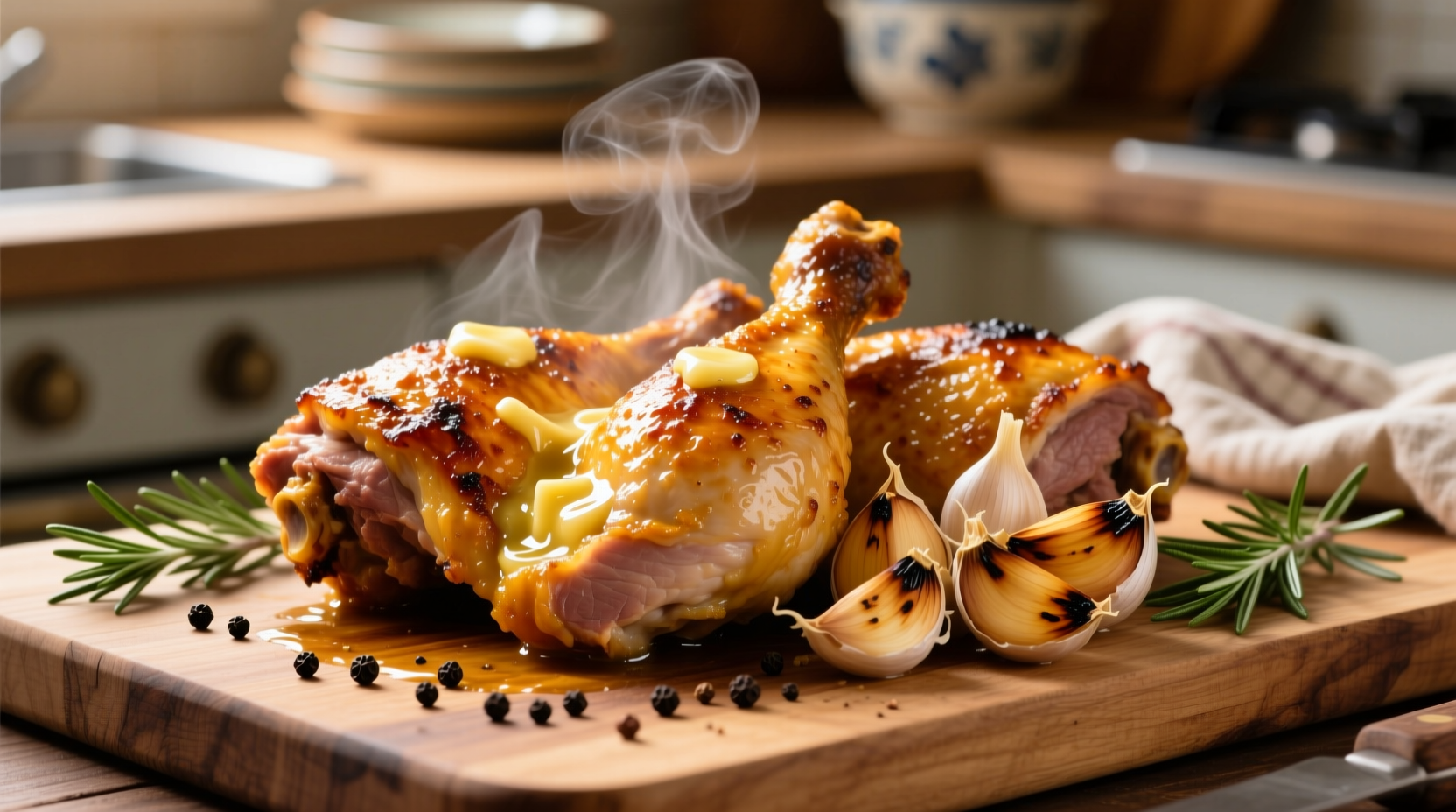Why Chicken Thighs and Garlic Make the Perfect Pairing
Chicken thighs and garlic form one of cooking's most reliable duos, combining rich flavor with foolproof results. Unlike breast meat, thighs contain more fat and connective tissue, making them exceptionally forgiving during cooking. When paired with garlic's aromatic compounds, they create complex flavors through the Maillard reaction without drying out.
According to the USDA Food Safety and Inspection Service, properly cooked chicken thighs must reach 165°F (74°C) internal temperature to eliminate foodborne pathogens while maintaining optimal texture.
Your Step-by-Step Cooking Roadmap
Planning Your Perfect Dish (5 Minutes)
Before you begin cooking, gather these essentials:
- 4 bone-in, skin-on chicken thighs (6-8 oz each)
- 6-8 fresh garlic cloves, peeled and smashed
- 2 tbsp high smoke-point oil (avocado or grapeseed)
- Fresh herbs (rosemary or thyme work best)
- Salt and freshly ground black pepper
Pro Tip: Always bring chicken to room temperature for 20-30 minutes before cooking. This ensures even heat distribution, preventing the outside from overcooking while the inside reaches safe temperature.
Preparation Techniques That Make the Difference
Drying the chicken skin properly is the single most important step for achieving crispy results. Follow these professional techniques:
- Pat thighs thoroughly with paper towels until no moisture remains
- Rub skin with 1 tsp oil and generous salt (this draws out moisture)
- Place on wire rack for 15 minutes while preheating oven
- Smash garlic cloves with flat side of knife to release allicin compounds
Research published in the Journal of Food Science confirms that smashing garlic before cooking increases the release of beneficial sulfur compounds by up to 30% compared to slicing.
| Cooking Method | Temperature | Cooking Time | Texture Result |
|---|---|---|---|
| Oven Roasting | 375°F (190°C) | 35-40 minutes | Crispy skin, juicy interior |
| Pan-Seared | Medium-high heat | 6-8 min per side | Deep brown crust, tender |
| Slow Cooker | Low setting | 4-6 hours | Fall-off-the-bone tender |
The Critical Cooking Phase
Follow this precise sequence for restaurant-quality results:
- Preheat oven to 375°F (190°C) with rack in center position
- Heat oil in oven-safe skillet until shimmering (about 2 minutes)
- Place thighs skin-side down, add garlic and herbs
- Cook undisturbed for 8 minutes to develop crust
- Flip thighs, transfer skillet to oven
- Cook 25-30 minutes until internal temperature reaches 165°F (74°C)
- Rest 5-7 minutes before serving
Never skip the resting period! This allows juices to redistribute throughout the meat. Cutting too soon causes valuable moisture to escape, resulting in drier chicken.

When This Method Works Best (and When It Doesn't)
Understanding context boundaries ensures success with this technique:
- Ideal for: Weeknight dinners, meal prep, entertaining guests
- Best equipment: Cast iron or stainless steel oven-safe skillet
- Avoid when: Cooking for large groups (scale up in multiple batches)
- Not recommended: Using pre-minced garlic (lacks depth of flavor)
The American Institute for Cancer Research notes that roasting chicken with garlic creates beneficial compounds like allicin, which demonstrates antioxidant properties when cooked properly. However, burning garlic produces bitter compounds, so monitor closely during the final cooking stages.
Troubleshooting Common Issues
Even experienced cooks encounter these challenges. Here's how to fix them:
- Soggy skin: Pat chicken drier before cooking; increase oven temperature to 400°F for last 5 minutes
- Bitter garlic: Add garlic halfway through cooking instead of at beginning
- Dry meat: Check temperature early; thighs continue cooking while resting
- Uneven browning: Rotate pan halfway through oven cooking time
Serving Suggestions That Elevate Your Dish
Complete your meal with these complementary pairings:
- Roasted vegetables (asparagus, potatoes, or Brussels sprouts)
- Simple green salad with lemon vinaigrette
- Creamy polenta or quinoa pilaf
- Fresh herb garnish (parsley or chives)
For maximum flavor impact, spoon pan juices over the chicken just before serving. The combination of rendered chicken fat and garlic creates an instant sauce that enhances every bite.
Storing and Reheating for Future Meals
Chicken thighs maintain quality better than breast meat when stored properly:
- Refrigerate within 2 hours of cooking in airtight container
- Consume within 3-4 days for best quality
- Reheat in 325°F oven until internal temperature reaches 140°F
- Freeze for up to 3 months in vacuum-sealed bags
Unlike chicken breast, thighs rarely dry out when reheated properly due to their higher fat content, making them ideal for meal preparation.











 浙公网安备
33010002000092号
浙公网安备
33010002000092号 浙B2-20120091-4
浙B2-20120091-4